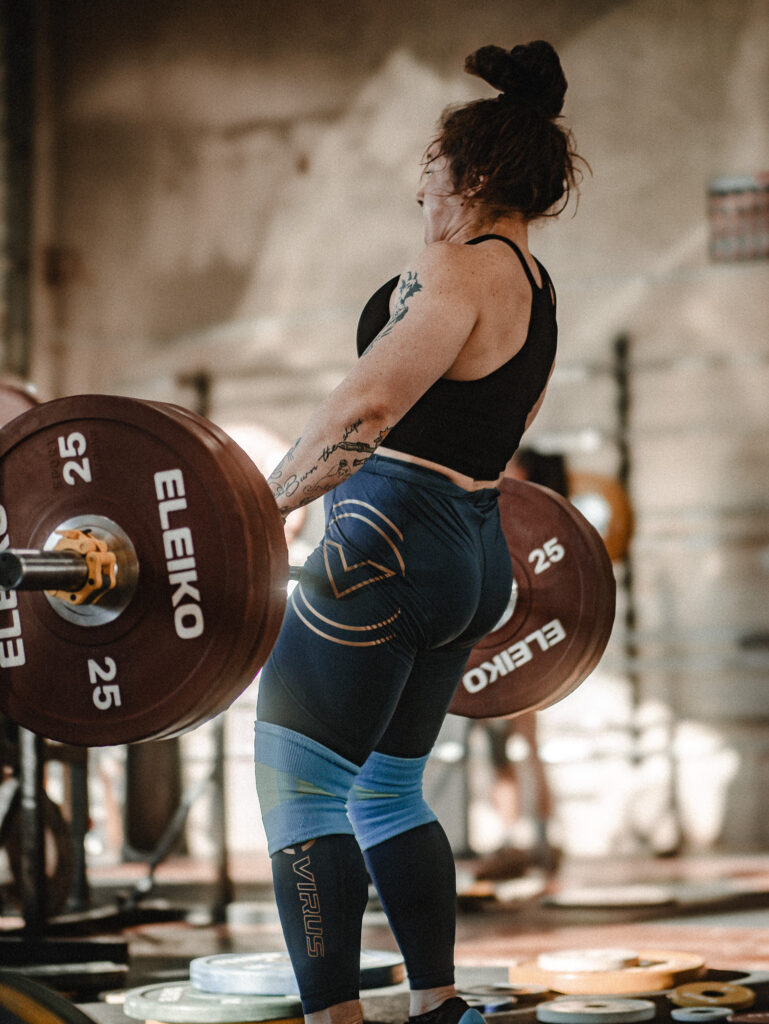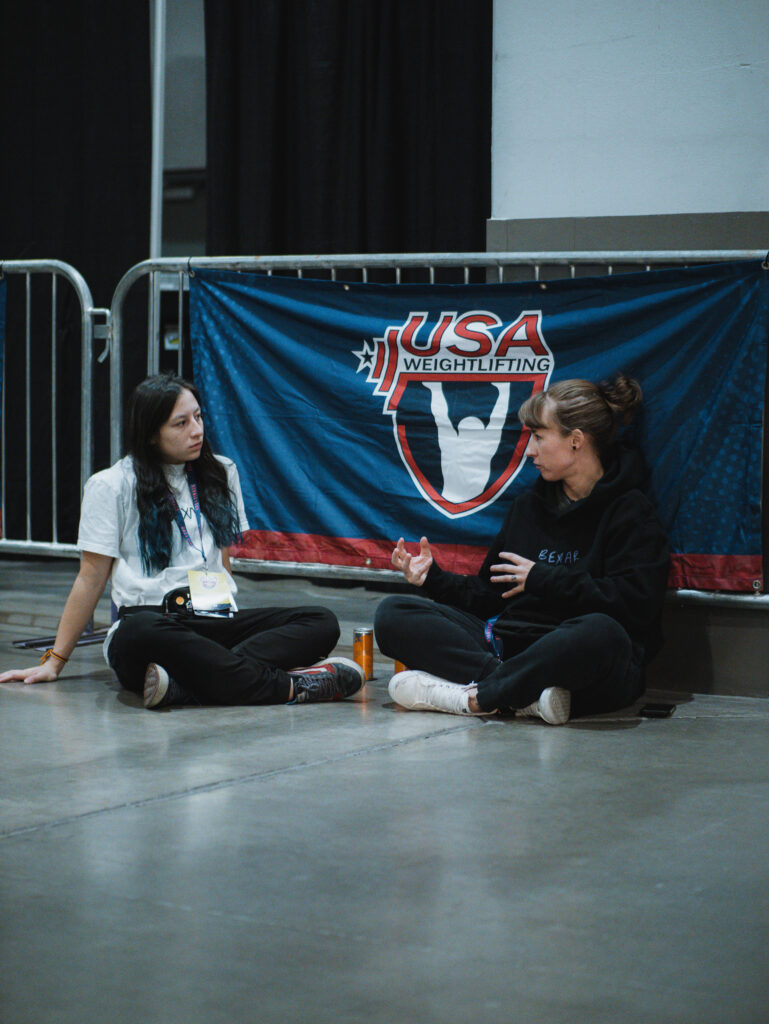
Why Proper Timing Matters and How to Fix Early Hip Rise in the Snatch & Clean
What Is Proper Hip Extension?
In Olympic weightlifting, hip extension should follow a specific proximal-to-distal sequencing pattern:
- Glutes initiate the lift by extending the hips
- Quads follow with knee extension
- Calves finish with ankle plantarflexion
- The spine remains neutral, and the trunk rigid throughout
This sequencing ensures:
- Maximum vertical bar speed
- Efficient force transfer from the floor
- Optimal positioning for the second pull and catch
Proper vs. Faulty Patterns: What You’ll See
Correct Hip Extension Pattern
- Hips and chest rise together
- Back angle stays constant from the floor to the knee
- Bar stays close and over midfoot
- Glutes and quads fire in a coordinated rhythm
- Movement is efficient, strong, and smooth
Faulty Pattern: Hips Rise First
- Hips shoot up faster than the chest (“stripper pull”)
- Back angle changes too early → chest drops
- The bar drifts forward or loops
- Knees extend prematurely, breaking the triple extension chain
- Lifter compensates with back and hamstring instead of glutes
What’s Really Happening in a Faulty Pattern?
When hips rise too early, the athlete is demonstrating a faulty firing pattern:
- Hamstrings and spinal erectors dominate the early pull
- Glutes fire too late or not at all
- The quads disengage because the knees extend too early
- The CNS (central nervous system) recognizes instability and reduces power output
- This pattern becomes ingrained and worsens with fatigue or heavier loads
Why It Matters: Positioning and CNS Trust
The CNS (central nervous system) plays a crucial role. If it doesn’t “trust” a position — like being stacked over the bar with proper hip torque — it will:
- Limit recruitment of stabilizers like the glutes
- Trigger compensations (early hip rise, spinal extension, excessive knee slide)
- Reduce force output and disrupt motor control
Building CNS trust means restoring postures and movement patterns that feel safe, stable, and efficient — through mobility, motor control, and loaded reinforcement.
How to Fix Early Hip Rise: Rebuilding the Pattern
Approach:
- Mobility and positioning
- Motor control and sequencing
- Load and reinforce the correct pattern
1. Mobility + Set-Up Precision
- Wall-Facing Hip Hinges – to train a proper hinge without chest collapse
- Quadruped Rock Backs with Neutral Spine – builds awareness of hip vs. spine motion
- Foam roll glutes, hamstrings, and quads – reduce tone and improve range
2. Motor Control Drills
- Tempo Clean/Snatch Deadlifts (3-2-1 from floor to knee) – enforces consistent back angle and controlled rise
- Pause Deadlifts at Mid-Shin and Knee – trains isometric control in the key posture zones
- Front Foot Elevated Split Squats – develops glute and quad co-contraction without loading the spine
- Cook Hip Lift / Glute Bridge Isometric – reinforces posterior chain initiation
3. Load + Reinforcement
- Clean Pull from Power Position (glute-focused) – emphasizes vertical drive and hip finish
- Snatch Pull to Hip + Shrug – teaches patience in the pull before explosive finish
- Hip Extension Med Ball Throws (forward or vertical) – develops triple extension explosiveness with correct sequencing
Coaching Cues to Use on the Floor
- “Push through the floor — don’t stand up too fast.”
- “Keep your chest and hips rising at the same time.”
- “Feel your glutes fire before your knees straighten.”
- “Hold your back angle until the bar passes your knees.”
- “Hips through the bar, not hips up.”
Takeaway
If an athlete’s hips shoot up before their chest, they are bypassing their glutes and pulling primarily with their back and hamstrings — which leads to missed lifts, compensation, and injury. Using the principles from Cal Dietz’s triphasic model and force sequencing, we can retrain the system to fire glutes → quads → calves in proper order.
Rebuild trust, reinforce rhythm, and restore power.

